Skin Cancer Slideshow


The Warning Signs of Skin Cancer
Skin cancers -- including melanoma, basal cell carcinoma, and squamous cell carcinoma -- often start as changes to your skin. They can be new growths or precancerous lesions -- changes that are not cancer but could become cancer over time. An estimated 40% to 50% of fair-skinned people who live to be 65 will develop at least one skin cancer. Learn to spot the early warning signs. Skin cancer can be cured if it's found and treated early.
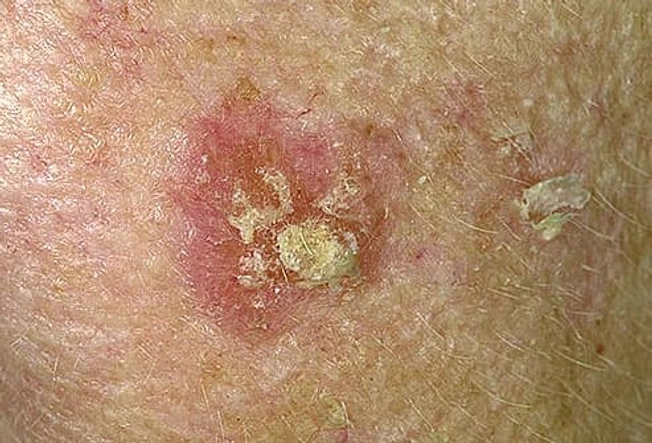
Actinic Keratosis (Solar Keratosis)
These small, scaly patches are caused by too much sun, and commonly occur on the head, neck, or hands, but can be found elsewhere. They can be an early warning sign of skin cancer, but it’s hard to tell whether a particular patch will continue to change over time and become cancerous. Most do not, but doctors recommend early treatment to prevent the development of squamous cell skin cancer. Fair-skinned, blond, or red-haired people with blue or green eyes are most at risk.
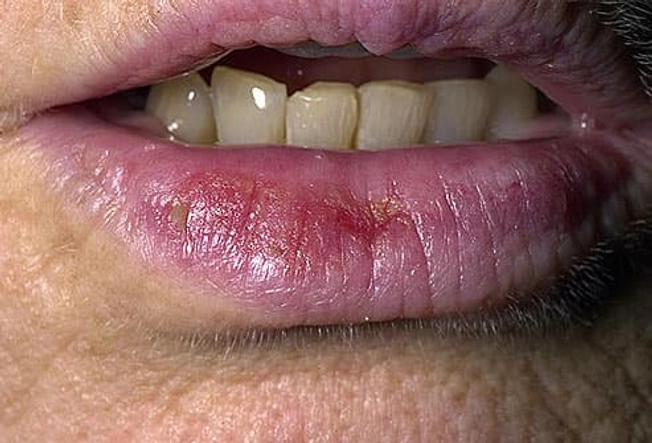
Actinic Cheilitis (Farmer's Lip)
Related to actinic keratosis, actinic cheilitis is a precancerous condition that usually appears on the lower lips. Scaly patches or persistent roughness of the lips may be present. Less common symptoms include swelling of the lip, loss of the sharp border between the lip and skin, and prominent lip lines. Actinic cheilitis may evolve into invasive squamous cell carcinoma if not treated.
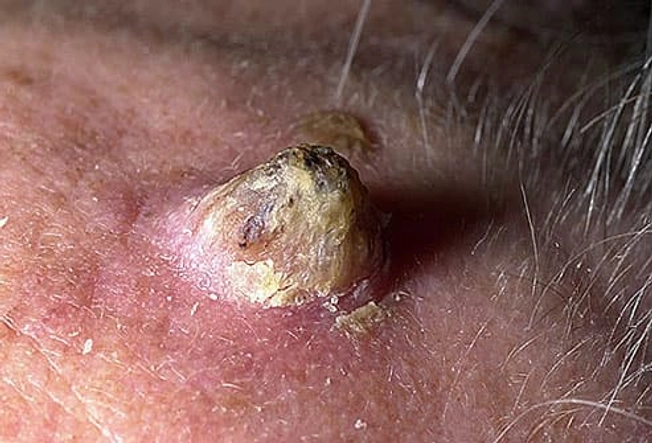
Cutaneous Horns
The cutaneous horn appears as a funnel-shaped growth that extends from a red base on the skin. It is composed of compacted keratin (the same protein in nails). It is a specialized type of actininc keratosis. The size and shape of the growth can vary considerably, but most are a few millimeters in length. Squamous cell carcinoma can be found at the base. It usually occurs in fair-skinned elderly adults with a history of significant sun exposure.
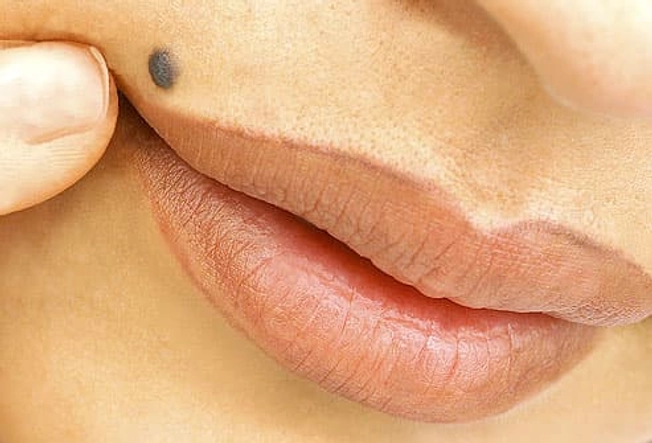
When Is a Mole a Problem?
A mole (nevus) is a benign growth of melanocytes, cells that gives skin its color. Although very few moles become cancer, abnormal or atypical moles can develop into melanoma over time. "Normal" moles can appear flat or raised or may begin flat and become raised over time. The surface is typically smooth. Moles that may have changed into skin cancer are often irregularly shaped, contain many colors, and are larger than the size of a pencil eraser. Most moles develop in youth or young adulthood. It's unusual to acquire a mole in the adult years.
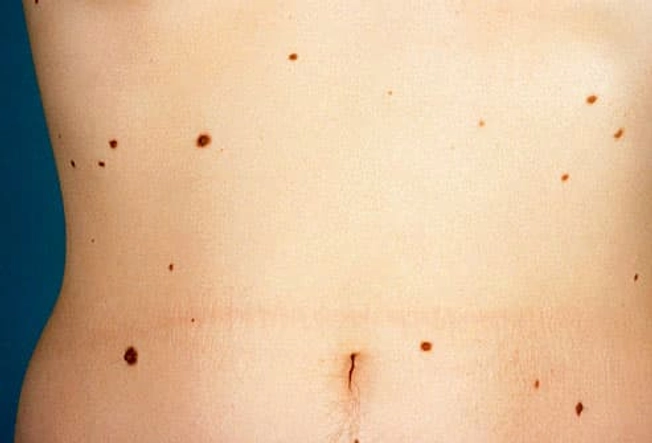
Dysplastic Nevi (Atypical Moles)
Atypical moles are not cancer, but they can become cancer. They can be found in sun-exposed or sun-protected areas of the body. Atypical moles may be larger (one-quarter inch across or larger) and more irregular in shape, with notched or fading borders. They may be flat or raised or the surface smooth or rough. They are typically of mixed color, including pink, red, tan, and brown.
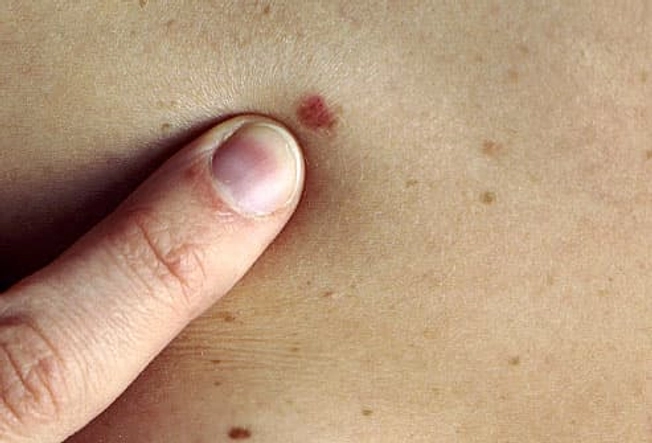
Know Your ABCDEs
Most moles on a person's body look similar to one another. A mole or freckle that looks different from the others or that has any characteristics of the ABCDEs of melanoma should be checked by a dermatologist. It could be cancerous. The ABCDEs are important characteristics to consider when examining your moles or other skin growths, so learn them in the slides to come.

Know Your ABCDEs: 'A' is for Asymmetry
Asymmetry means one half of a mole does not match the other half. Normal moles are symmetrical. When checking your moles or freckles, draw an imaginary line through the middle and compare the two halves. If they do not look the same on both sides, have it checked by a dermatologist.
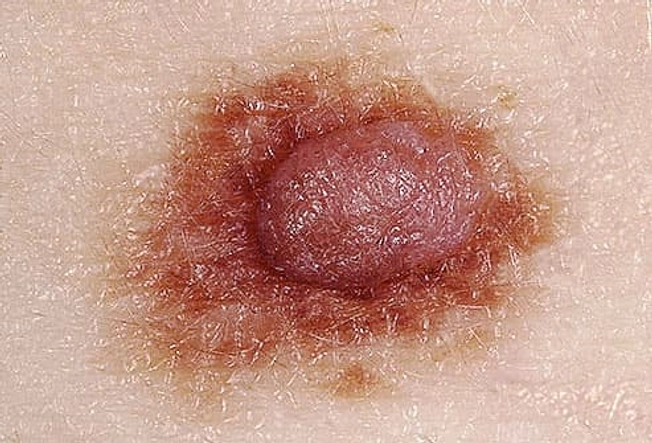
Know Your ABCDEs: 'B' is for Border
If the border or edges of the mole are ragged, blurred, or irregular, have it checked by a dermatologist. Melanoma lesions often have uneven borders.
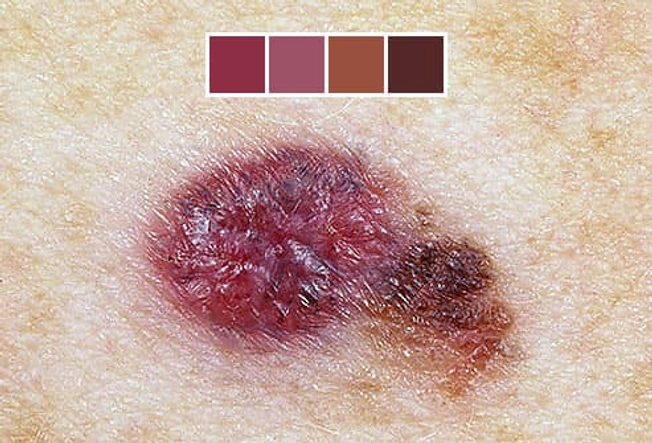
Know Your ABCDEs: 'C' is for Color
A mole that does not have the same color throughout or that has shades of tan, brown, black, blue, white, or red is suspicious. Normal moles are usually a single shade of color. A mole of many shades or that has lightened or darkened should be checked by a doctor.
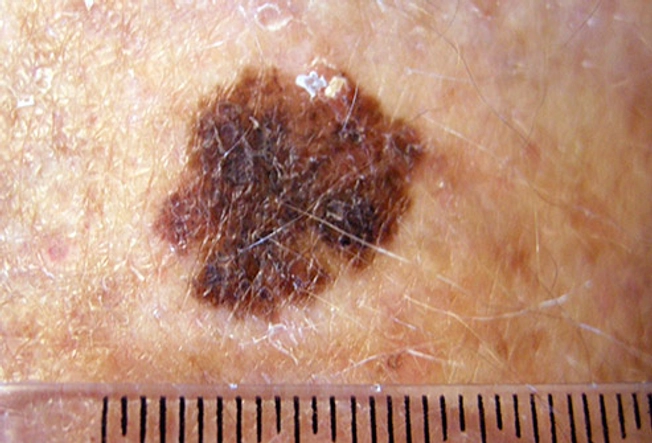
Know Your ABCDEs: 'D' is for Diameter
If you have a mole that appears to be getting larger or is changing color or size or is itching or bleeding, you should consider it suspicious.
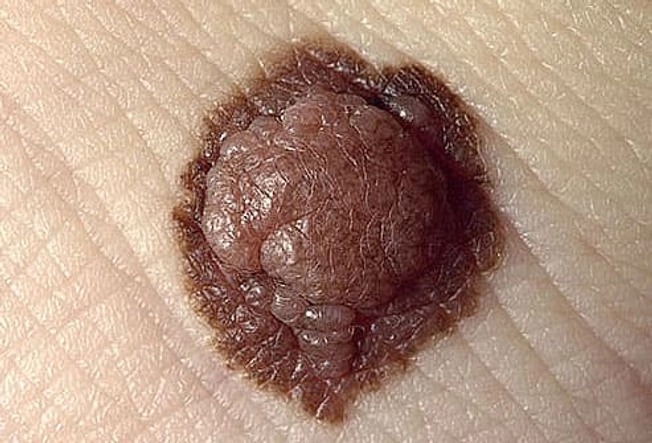
Know Your ABCDEs: 'E' is for Evolving
A mole that is evolving – shrinking, growing larger, changing color, begins to itch or bleed – should be checked. If a portion of the mole appears newly elevated, or raised from the skin, have it looked at by a doctor. Melanoma lesions often grow in size or change in height rapidly.

Tips for Screening Moles for Cancer
Examine your skin on a regular basis. A common location for melanoma in men is on the back, and in women, the lower leg. But check your entire body for moles or suspicious spots once a month. Start at your head and work your way down. Check the "hidden" areas: between fingers and toes, the groin, soles of the feet, the backs of the knees. Check your scalp and neck for moles. Use a handheld mirror or ask a family member to help you look at these areas. Be especially suspicious of a new mole. Take a photo of moles and date it to help you monitor them for change. Pay special attention to moles if you're a teen, pregnant, or going through menopause, times when your hormones may be surging.
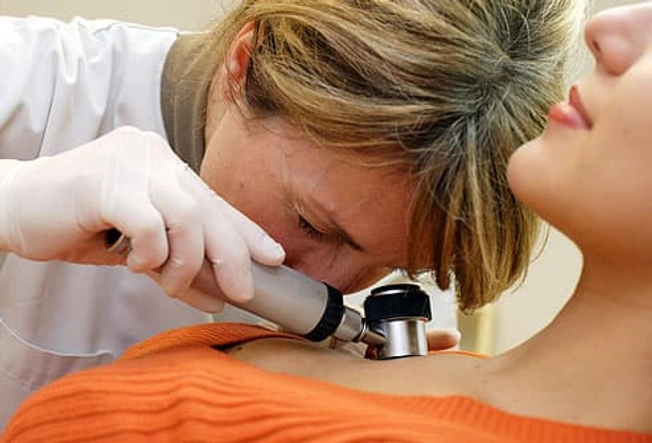
How Are Moles Evaluated?
If you find a mole or spot that has any ABCDE's of melanoma -- or one that's tender, itching, oozing, scaly, doesn't heal or has redness or swelling beyond the mole -- see a doctor. Your doctor may want to remove a tissue sample from the mole and biopsy it. If found to be cancerous, the entire mole and a rim of normal skin around it will be removed and the wound stitched closed. Additional treatment may be needed.

A Primer on Skin Cancer
Malignant melanoma, especially in the later stages, is serious and treatment is difficult. Early diagnosis and treatment can increase the survival rate. Nonmelanoma skin cancers include basal cell carcinoma and squamous cell carcinoma. Both are common and are almost always cured when found early and treated. People who've had skin cancer once are at risk for getting it again; they should get a checkup at least once a year.

Melanoma
A melanoma is a form of skin cancer that develops in the cells (melanocytes) that produce the pigment that gives color to your skin, hair and eyes. The tumors usually contain melanin which makes them dark in color but in some cases, they can be free of any pigment. Melanomas spread quickly so it is important to identify and treat them quickly. They may be removed surgically, but immunotherapy (drug treatment to help your immune system fight the cancer), targeted therapy (targeted drug treatments that focus on weaknesses in the cancer cells), radiation therapy or chemotherapy (drugs to kill cancer cells) may be needed.

Squamous Cell Carcinoma
This nonmelanoma skin cancer may appear as a firm red nodule, a scaly growth that bleeds or develops a crust, or a sore that doesn't heal. It most often occurs on the nose, forehead, ears, lower lip, hands, and other sun-exposed areas of the body. Squamous cell carcinoma is curable if caught and treated early. If the skin cancer becomes more advanced, treatment will depend on the stage of cancer.
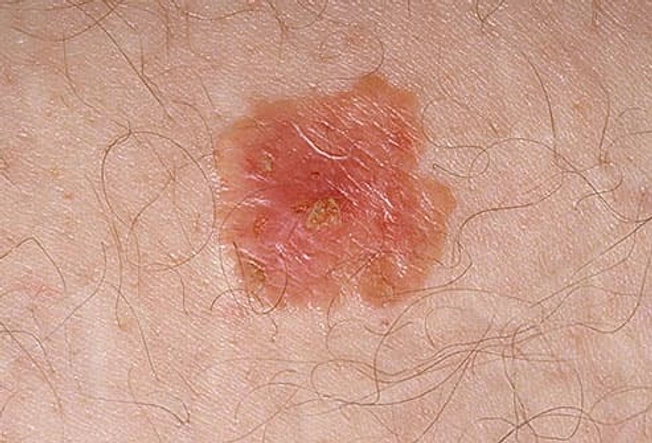
Bowen Disease
Bowen disease is also called squamous cell carcinoma "in situ." It is a type of skin cancer that spreads outward on the surface of the skin. By contrast, "invasive" squamous cell carcinomas can grow inward and spread to the interior of the body. Bowen disease looks like scaly, reddish patches that may be crusted; it may be mistaken for rashes, eczema, fungus, or psoriasis.
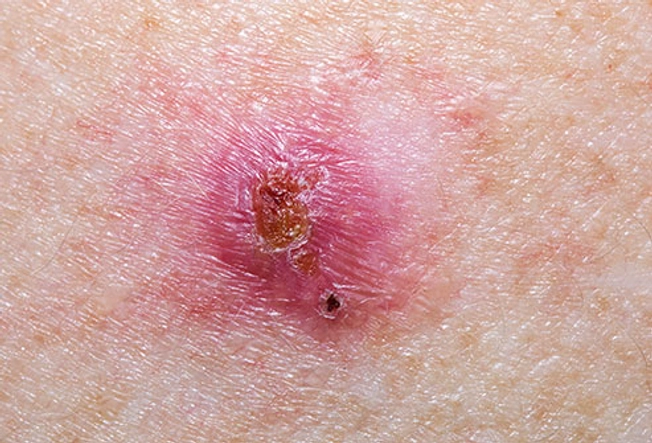
Basal Cell Carcinoma
Basal cell carcinoma is the most common form of skin cancer caused by sun damage. BCC causes small bumps or open sores on the skin like this one. It is slow growing, and if not removed can spread into local underlying tissues.
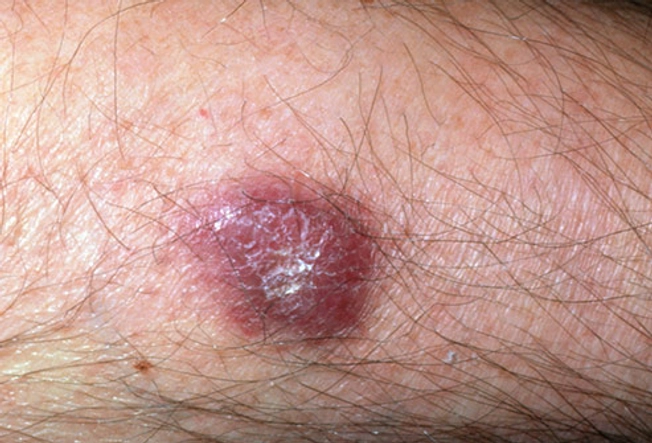
Kaposi's Sarcoma
Kaposi's sarcoma is a cancerous skin tumor lesion that is a feature of up to 20% of all male AIDS (Acquired Immune Deficiency Syndrome) patients. Kaposi’s sarcoma typically appears as purple lesions with silver scales on the feet and ankles that then spread up the legs to hands and arms. It is an aggressive and often fatal cancer and may cause internal bleeding.

Who Gets Skin Cancer, and Why?
Sun exposure is the biggest cause of skin cancer. But it doesn't explain skin cancers that develop on skin not ordinarily exposed to sunlight. Exposure to environmental hazards, radiation treatment, and even heredity may play a role. Although anyone can get skin cancer, the risk is greatest for people who have:
- Fair skin or light-colored eyes
- An abundance of large and irregularly-shaped moles
- A family history of skin cancer
- A history of excessive sun exposure or blistering sunburns
- Lived at high altitudes or with year-round sunshine
- Received radiation treatments

Reduce Your Risk of Skin Cancer
Limit your exposure to the sun's ultraviolet rays, especially between 10 a.m. and 4 p.m., when the sun's rays are strongest. While outdoors, liberally apply a broad spectrum sunscreen with an SPF of 30 or higher (don't forget the lips and ears!), wear a hat and sunglasses, and cover up with clothing. And remember, if you notice changes to your skin such as a new growth, a mole changing appearance, or a sore that won't heal, see a doctor right way.